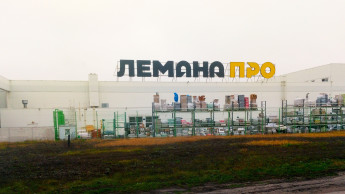

deep insights, facts & figures

Poland, the Czech Republic and Slovakia are close neighbours with noticeable historical, cultural and economic similarities. They are often treated as one market, also when it comes to logistical concepts
DIY markets in Poland, the Czech Republic and Slovakia are quite similar. Two sales models function there: a modern one, using superstore chains, and a traditional one, based on local wholesale outlets and specialist stores. All these markets are witnessing an expansion of west European DIY chains, whose share of the total sales volume is growing. In Poland this share is approximately 40 per cent today. Among the providers of logistics services operating in this market there are also major suppliers from west Europe. For instance the German logistics company Dachser intensified its operations in central and eastern Europe after the year 2000, while the major players in the logistics market had already been functioning there since 1989–1990. Nonetheless, Dachser managed to successfully implement a specialist solution for suppliers of products to construction and home and garden superstores: Dachser DIY-Logistics. The idea of this service is to deliver shipments to home and garden superstores and also provide a number of additional services, including in-store merchandising run by the operator’s subcontractors. As a logistics operator, Dachser has been working with all of the major European chains for years. Today it delivers two million shipments to 18 000 outlets per year. “Thanks to this experience, Dachser has specified time-frames for the superstores, which allows for better planning and execution of deliveries,” says Juliusz Pakunski, DIY project manager at Dachser in Poland. “Time-frames are the biggest problem for the suppliers who carry out distribution on their own.” The clients – manufacturers and distributors – expect a logistics operator to ensure efficient distribution, handling of returns and, more and more often, additional services such as merchandising or deliveries directly to the end customer. “The services offer is built to suit these expectations,” says Juliusz Pakunski. He cites an example of this in the Czech Republic where, in order to offer better services to clients, a new product has been introduced that guarantees delivery in the earlier part of the day: “targospeed 10” and “targospeed 12” – by 10 a.m. and noon, respectively. Retail chains often have their own systems of distribution to their facilities. The most popular distribution model involves a central warehouse and a cross-docking system. The decreasing minimum number of orders, the so-called franco, is a visible trend that results in a smaller logistical volume per…
Related articles
Read also

 Menü
Menü










 Newsletter
Newsletter